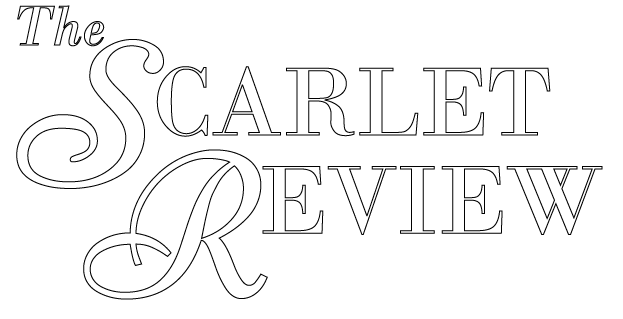






Media has time and time again been regarded as an immensely powerful, yet invisible, entity. Throughout history, it has lived up to this title by utilizing its leverage to shift the mindsets and beliefs of its indulgers, most notably in periods of wartime such as the Vietnam War. The possibility of media itself waging a war on ideas and groups of people is one that is often touched upon but seldom fully explored. The reality is that the past few decades stand as a testament to the fact that the media, knowingly or ignorantly, has waged a war on identity and the victim is the religion of Islam accompanied by its followers, otherwise known as Muslims. The media’s use of anti-Islamic rhetoric is rooted in a misrepresentation of the religion of Islam, which has produced an unprecedented age of mass hysteria and a perpetuating fear and generalization of Muslims, otherwise known as Islamophobia.
The generalization of Islam, that is relentlessly practiced by media outlets as a single religion with a single demographic of followers, is an action that not only reflects factual inaccuracies but also contributes to the Orientalism and, in effect, the isolation of Muslims, predominantly in Western countries. Orientalism is “the historically situated Western construction of non-Western cultures as the other.” Thus, by practicing Orientalism, foreigners are depicted as “alien, distant, antiquated, irrational, etc.” (Cronin 4). This Orientalism is most often witnessed when far-right extremist Muslims commit crimes, most prominently acts of terror and are regarded as simply Muslims, despite the fact that most Muslims ideologically refute the actions of these individuals, going so far as to deny their claims of adhering to Islam. Islam is a religion that consists of two major sects, Sunni and Shiite, as well as over seventy divisions that fall under these sects. The implications of oversimplifying Islam and its diverse demographics in regards to its followers does not only deny them any sense of a unique identity, but it also functions to support efforts to create an identity for the Muslims as the “other,” suggesting that they are utterly different from people of other faiths and should thus be regarded with fear and disdain (Dijk 14). This perception of Muslims as the “other” has been endorsed by the media through headlines in printed newspapers and online articles that attack the religious identity of a criminal or terrorist rather than the terrorist himself/herself. For example, following the September 11th attack on the Twin Towers located in New York, 70% of all mainstream media articles published within six months of the attack, immediately identified the attackers as Muslim (Belich 6). Ultimately, the media utilizes its resources and breadth of influence as weapons against Muslims, as a means to generalize them despite their diversity. This generalization has produced numerous negative consequences, the most significant of which is a rise in Islamophobia.
The media’s generalization of Muslims spreads from individuals to countries themselves, thus producing an inaccurate representation of Islam on the basis of a country’s culture, which is mistaken to be religiously dictated. The prime example of this generalization that exists across countries is rooted in the use of Saudi Arabia as a point of comparison utilized by media outlets. Many of the harsh practices established in countries such as Saudi Arabia are misinterpreted as being based on religion when in fact; many of them are the byproduct of culture. For example, it is noted time and time again by media figures that women are prohibited from driving in Saudi Arabia as a result of Islam’s oppression of women, when in reality this is a practice that has no religious basis as logically cars were not in existence during the Prophet Muhammad’s time but, more ideologically, Islam regards women and men as equals. Although Saudi Arabia is a Middle Eastern country that is among the most financially lucrative and politically involved in Western politics, it should by no means stand as a representation of all Muslims as it is also the most conservative and extreme in regards to enforcing Sharia law, or in other words, law based on Islamic beliefs and principles. Mainstream media figures have fallen into a habit of displaying recurring images depicting extreme criminal punishments such as beheadings, as well as the reservation of many women’s rights, including the right to drive and, until recently, the right to vote. The depiction of these images, and these images alone, contributes to Islamophobia in Western countries as it is depicted as an oppressive and cruel religion. The mistake of only depicting extreme countries such as Saudi Arabia or referring to almost the entire Middle East and portions of Asia as “Muslim countries,” denies any disparities that exist between these countries. The denial of these differences further perpetuates Islamophobia and inaccurately represents it as a religion that is only interpreted in one way, and that to in the most extreme manner. As author, professor and religious scholar Reza Aslan puts it in an interview with CNN, “when talking about a religion of over one and a half billion people, it certainly becomes easy to paint them (Muslims) all with the same brush” (Aslan). Ultimately, generalizations made in the media regarding Islam are often based on cultural practices and not Islamic principles. The media often highlights these practices as only the most extreme countries are observed and then used as a point of comparison to all Muslim countries, thus propagating Islamophobia.
Perhaps the most heinous act of media figures and sources is the manipulation and taking out of context Quran verses in efforts to add an element of legitimacy to Islamophobia. Media figures have established a practice of utilizing single verses or, in Arabic, Ayats of the Quran as false evidence to support the misconception that Islam is a violent and backwards religion, a perception that is all but accurate. Among the most common lines utilized by media figures in defense of their stance that Islam is a violent religion is the verse “And kill them wherever you find them” (Quran 2:191). Upon further analysis it becomes evident that this verse was revealed in the context of a war. An analysis of the verses preceding and following this verse indicate that the fighters are ordered to fight only when the other party initiates it, and demanded to stop when the other party ceases (Quran 2:189-193). The rulings of Islam also dictate that during wartime warriors must not kill women, children or the elderly; they must not kill trees; they must not attack places of worship and they must not disfigure corpses (Takim 6). This level of comprehension of these verses fails to be achieved by mainstream media outlets as they simply touch on an individual verse, taking them at face value, either as a result of poor research or efforts to bring legitimacy to unsubstantiated anti-Islamic rhetoric. These elements of Islam fail to be presented by the mainstream media as they refute and disprove the characterization of Islam as an inherently violent and cruel religion. The fact of the matter is that the verses in any Holy Book can be taken out of context and manipulated to present an inaccurate representation of the religion to which the book belongs. However, the amount of anti-religion rhetoric issued in media sources against alternate religions in the media, is incomparable to the 91% of media sources that took a majorly negative stance on Islam in their publications in the years following the September 11th attacks (Brown 2) to the present. Perhaps an alternate explanation for the manipulation of Quran verses can be attributed to poor translations and interpretations based on a narrow stream of knowledge of the Quran and its language. The Quran was originally written in a dialect of Arabic different from contemporary Arabic, producing a contrast that is somewhat comparable to the contrast between Old English and English. The nature of the language makes developing false interpretations and allowing misconstruction of meanings inevitable. Oftentimes media sources utilize this weakness to their advantage, by misrepresenting certain terminology or utilizing definitions that are easily manipulated, to reflect a negative meaning. Among the most common terms that are manipulated by media outlets is the term Jihad, which loosely translates to struggling in the way of God or, in Arabic, Allah. The term Jihad has been manipulated to depict hundreds of inaccurate definitions including the most common definition of killing in the name of God. The ease with which the language of the Quran is manipulated provides an explanation for the misrepresentation of Islam in mainstream media sources that utilize poor translations to justify inaccurate claims made against the religion. Perhaps the focus on these easily manipulated verses functions to draw attention away from the verses that express love, compassion and above all, humanity. Perhaps the most well known of these sources is “Whosoever kills an innocent human being, it shall be as if he has killed all of mankind, and whosoever saves the life of one, it shall be as if he has saved all of mankind” (Quran 5:32). Despite the blatant condemnation of murder expressed in this verse, media outlets time and time again characterize Islam as a violent religion.
An immense disparity exists in the issues and events that media sources choose to cover that regard Islam in a positive light and that depict Islam in a negative light; more often than not the latter prevails, thus producing an inaccurate representation of Islam. In recent decades massive terror attacks have increased in number and severity. “Islamic” extremist groups who claim to be motivated by religion have committed a number of these attacks. Among these, is the September 11th attacks; the Fort Hood Shooting; numerous attempted airport bombings and the Boston Marathon bombing. These events received profound attention in virtually all media outlets. In all of the above-mentioned events, the suspects identified as Muslims. Although these events should indubitably be acknowledged in news sources, the emphasis placed on the religious background of these individuals and the events themselves, have far outweighed the attention given to acts of martyrdom conducted by those who have identified as Muslims. An example of this occurred on January 6th, 2014 at the Ibrahimzai School in a tribal area of Pakistan. A suicide bomber attempted to enter the school, however before he was able to do so, a student by the name of Aitazaz Hassan Bangash jumped on him, thus sacrificing his life as the bomb detonated, in order to preserve the lives of hundreds of students (Sherazi 1). Aitazaz should have been revered as a hero and a martyr; however, he was seldom mentioned in mainstream media outlets. The lack of acknowledgement that this act of martyrdom received is another indication of the media’s bias in reporting, as media outlets oftentimes highlight only the events that support their propaganda and in many cases this propaganda is essentially spreading Islamophobia.
The choice to highlight certain events in the media transforms misconceptions of Muslims to a general misconception of Islam as a whole. Because religiously backed terrorist attacks initiated by self-proclaimed Muslims are so highly publicized, the general public has often been persuaded to believe that Islam supports these acts of terror. In reality, the lack of publicity received by heroes such as Aitazaz prevents the public from realizing that although certain self-proclaimed Muslims do practice violence, there is a grand majority that not only condemn violence but also encourage peace, as they believe that this is what Islam promotes. As Reza Aslan puts it, “a religion is neither peaceful nor violent, it all depends on what an individual brings to a religion” (Aslan). In this day and age, the over-representation of violent individuals in the media causes the public to believe that Islam simply promotes violence when, in reality, it is the individuals who commit acts of terror that are violent, not the religion itself. This topic also brings to question the manner in which acts of terror are related. Individuals from every faith and ideology have been responsible for crimes against humanity. However, the media has developed a pattern of emphasizing the religious background of an attacker when he/she happens to be Muslim. However, if a suspect happens to be of an alternate religious background, this is rarely called into question. A prime example of this is the Sandy Hook Elementary School shooting that occurred in Newtown, Connecticut. The assailant was a Catholic, Caucasian male who massacred twenty children. However, his religious background failed to be called into question. It is pertinent to ask why the disparity exists in these attacks. We must ask ourselves if the attacker happened to be Muslim, would the heading in media outlets read ‘Muslim Shooter Attacks School’ as opposed to ‘Suspect in Sandy Hook Shooting Has Been Identified’?
Another notable bias is in the manner in which attacks are reported. In lieu of recent events, Paris has received unprecedented amounts of media coverage due to the attacks initiated by ISIS. However, on the same day of these attacks a suicide bombing in Beirut claimed the lives of forty-three individuals, who were predominantly Muslim (Botelho 2). ISIS reportedly orchestrated these attacks and a majority of the victims were Muslim. Although this event was mentioned in the news, it did not come close to reaching the level of publicity that the Paris attacks received. This selective reporting suggests that the mainstream media propagates the misconception that Muslims are only assailants and attackers they can rarely be victims. A combination of the aforementioned incidents of bias brings into question the media’s representation of both Islam and Muslims. This bias exists in the fact that media outlets have an inclination to favor non-Muslims in reporting, thus perpetuating misconceptions. These misconceptions feed the rampant spread of Islamophobia throughout the world, predominantly in Western countries.
The mainstream media is responsible for not only misrepresenting but also slandering Islam and Muslims through its biased, inaccurate, manipulative and selective reporting. Muslims have been generalized, dehumanized and treated with inequity in the media for decades. These factors combine to result in a gross misrepresentation of Islam in the mainstream media, a representation that is fraught with bias, racism, generalization and inaccuracies. The media’s role in shifting attitudes and ideologies in the past is undeniably profound. It is the media that is responsible for controlling and filtering the information that the public is exposed to. Ultimately, it is the viewer’s responsibility to choose which sources are least prejudiced, as well as accurate and impartial. As members of society it is our responsibility to free ourselves from the shackles imposed by the media by searching for answers that will lead to truth, and only truth. Perhaps the first step in doing so is to reevaluate our perceptions of a religion that instructs its followers to greet every individual with the phrase “Peace be upon you.”
Aslan, Reza. “Does Islam Promote Violence?” Interview. 29 Sept. 2014.
Akbarzadeh, Shahram, and Bianca Smith. The Representation of Islam and Muslims in the Media.Melbourne: Monash U, 2005. 4-40. Print.
Bleich, E., H. Nisar, and R. Abdelhamid. “The Effect Of Terrorist Events On Media Portrayals Of Islam And Muslims: Evidence From New York Times Headlines, 1985–2013.” Ethnic And Racial Studies (2015): 19p.. Scopus®. Web. 14 Nov. 2015.
Botelho, Greg. “Beirut Suicide Bombings Kill over 40 – CNN.com.” CNN. Cable News Network, 16 Nov. 2015. Web. 21 Nov. 2015.
Cronin, Stephanie. “Introduction: Edward Said, Russian Orientalism And Soviet Iranology.” Iranian Studies 48.5 (2015): 647-662. Academic Search Premier. Web. 10 Dec. 2015.
Brown, Lorraine, Joanne Brown, and Barry Richards. “Media Representations Of Islam And International Muslim Student Well-Being.” International Journal Of Educational Research 69.(2015): 50-58. ScienceDirect. Web. 17 Nov. 2015.
Poole, Elizabeth. 2002. Reporting Islam: Media Representations of British Muslims. I.B Tauris Publishers: London.
Sherazi, Zahir, and Saima Mohsin. “Teen Dies Stopping Suicide Bomber at School in PakistanCNN.com.” CNN. Cable News Network, 9 Jan. 2014. Web. 12 Nov. 2015.
The Qur’an (Oxford World’s Classics). Trans. M. A. S. Abdel Haleem. USA: Oxford University Press, 2008.
Takim, L. “Peace And War In The Quran And Juridical Literature: A Comparative Perspective.” Journal Of Sociology And Social Welfare 38.2 (2011): 137-157. Social Work Abstracts. Web. 10 Dec. 2015.
Van Dijk, Teun. 1991. Racism and the Press. Routledge: USA.